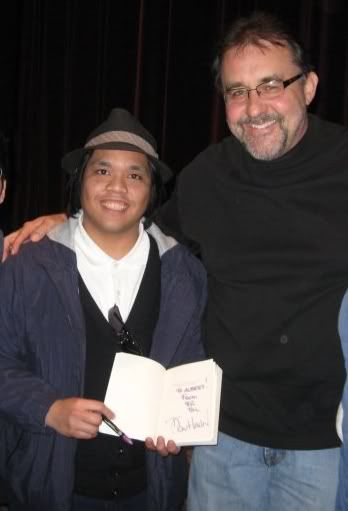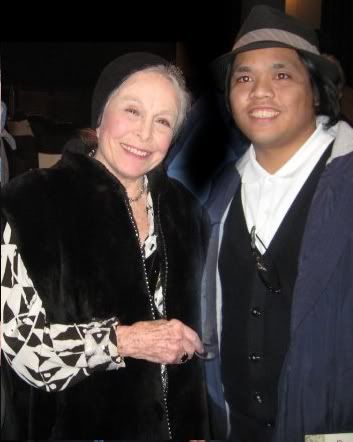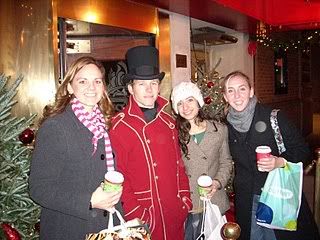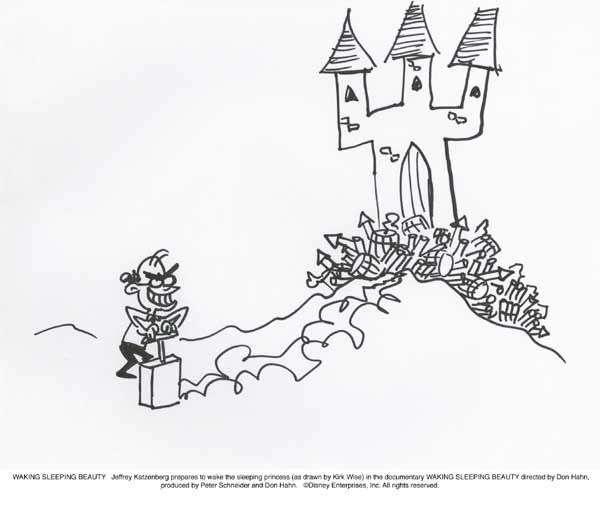Posted: Wed Mar 10, 2010 4:16 pm
Oh, really?Goliath wrote:Disney hates all films made between 1967-1989. They need to maintain the myth that all those films were bad in order to further milk their so-called 'fab four'.
Oh, really?Goliath wrote:Disney hates all films made between 1967-1989. They need to maintain the myth that all those films were bad in order to further milk their so-called 'fab four'.
Rusty? Wait. You mean, like it deserved better treatment, yet it didn't get any?ajmrowland wrote:That explains it's rusty Platinum DVD.
The Jungle Book was produced in 1966 under Walt Disney and only came out in 1967, so naturally I didn't mean to include that film in my commentary. But it's true: Disney hates all films made between TJB and TLM. Just look how they treat those films. The dvd's are poor, there is no merchandise, the characters get ignored. And then the on-going parrotting about "the dark age" (when Robin Hood and The Rescuers were top-grossing films).DisneyJedi wrote:Oh, really?And I suppose they hated Jungle Book as well?
Hopefully, that will all change by the time the SE DVD of The Black Cauldron comes out.ajmrowland wrote:But was easily the worst PE. That's what I meant by "rusty".
And yeah, this attitude has got to stop. They keep looking for money, but they gotta wake up and smell the moolah that is the so-called "dark ages" films.
that's the worse, as I consider Peter Pan the worst in the Platinum line. Heheajmrowland wrote:But was easily the worst PE. That's what I meant by "rusty".
I very much agree.ajmrowland wrote: And yeah, this attitude has got to stop. They keep looking for money, but they gotta wake up and smell the moolah that is the so-called "dark ages" films.
Don Hahn said “The original working title of the film was ‘Persistence of Vision’ which referred both to the grueling process of animation and also the physiological affect of viewing a series of stills and perceiving them as motion. But there is a great Jeffrey Katzenberg quote in the film where he says we’ve got to wake up Sleeping Beauty. Peter drew my attention to it and the phrase immediately resonated with us all as the title.”
The story being told - without an iota of fat - is the story of the above-the-line players and how they felt about each other. The machinations and power plays they work on each other to wrest control and credit for the studio’s success is the primary interest of this film, not the attitudes and thoughts of the animation people.
Only a couple of times do we really get to imagine how the artists felt about what was going on. There’s a meeting called by Katzenberg to talk about how the people felt about the period. They explained that they weren’t able to spend appropriate time with their families because of all the excess overtime that was demanded of them. Katzenberg tears up and promises that things will get better. They don’t; things get worse.
There are ample and tight closeups of many of these people: Tom Sito, Andreas Deja, Eric Goldberg, Joe Ranft, Roger Allers, Mike Gabriel and many more. Yet, none of them - NONE - are labelled and identified. Yet, every executive gets clear identification.
In the comments section a lot of people refer to an upcoming book: "the real story of Disney animation will have to wait until next year, when a book on the studio from the day Walt died to the downfall of Eisner comes out". Do you know what book they're talking about? What's the title?Eisner, Katzenberg or Roy Disney are also seen in detailed comments taken from press releases, all of which underlines the lust for power over the animation studio. The fever pitched competition between Disney and Katzenberg is certainly highlighted.
There are no good guys and no bad guys. There's a group of people who really wanted to try and do something really remarkable. I think the issues between Jeffrey Katzenberg and Michael Eisner have already been well documented by other people in terms of their combative relationship, but I would say that it was not 'us against them.' It was all of us working, I think, quite successfully together and producing some exceptional movies with all of the personal desires and egos that are always part of the creative process.
New York theatre reporter Patrick Pacheco, who gets a writing credit for this documentary, tape-recorded current interviews with the major players, and these are scattered over existing footage from that era. "When I took on the job," Pacheco recalls, "Peter gave me two guidelines: 'Make it emotional, and make in dramatic.'
Glen Keane, who specialized back then in drawing villains, heard the pre-recorded demo of Jodi Benson singing 'Part of Your World' and begged to draw Ariel. The 'Little Mermaid' directors said to him, 'Can you even draw a pretty girl?' And Glen said, 'I've got to draw Ariel. I can feel it in my heart.' It was that kind of inspiration.
Alan Menken had a great line — which is not in the documentary — about how difficult he could be: 'Howard was a self-flagellating artist, and the problem with working with self-flagellating artists is that sometimes they miss — and hit you!'"
Director Don Hahn and Producer Peter Schneider Video Interview WAKING SLEEPING BEAUTYPeter Schneider, credits Pacheco with organizing the material into a cohesive whole. “Patrick was very influential in seeking out the truths. Oddly enough, he and all of us had the same basic story — different points of view on it maybe, but the same story. So I’m thrilled he got to be part of the process and actually enhance the process. He brought a sense of discipline to us and kept focusing on what was the journalistic truths, which, of course, is what is so much fun about the movie — that it explores both the journalistic truths and the emotional truths at that period of time.”




Thanks so much for sharing! And it looks like you had a blast.Escapay wrote:Just want to share my thoughts on Waking Sleeping Beauty. Will be back later.
CS: It's kinda funny that Peter produced the movie, because there's definitely parts of the movie where he does not come off that well. Did he realize that and just said, "I want to just do it anyway?"
Hahn: Yeah, very definitely. I think there was support from not only Peter, but from Jeffrey and all the players to be a part of it, I think mainly because enough time had passed. We knew it was a special time, but if it were earlier to that time, the wounds mighta been a little fresher. I think that was the time you could look at it with some distance and say, "Yeah, you know we had our faults and yeah, that caricature's pretty brutal." But you would expect to actually understand what it meant to look back twenty years and remember that time, warts and all, good, bad or indifferent.
CS: How involved was Disney in making the movie, because obviously you had to get approval from them for a lot of the footage, I'd imagine. Did they help finance the movie or were they involved in some way at all while making it?
Hahn: We went to Richard Cook, who was the head of the studio when we first started this movie. Peter and I went out to have breakfast with him and said, "We'd like to tell this story and how important the history of Disney was to preserve." He was incredibly supportive not only in terms of finances, but calling Jeffrey Katzenberg about it saying, "Jeffrey, we want to do this story. Would you be involved? Would you talk to Don about it and give us access to the clips from the Disney library?" So without Dick's patronage at the beginning, it wouldn't have happened. Then luckily other people jumped on board. I think we had great support from Bob Iger, we had great support from Ed Catmull, and people in animation today just to be able to preserve this part of our history.
CS: As far as the involvement of Disney and getting approval for footage, did they want to be very heavily involved or were they willing to let you do your own thing?
Hahn: They were very open to letting us do what we wanted to do, and we were always from the beginning very open back. I think we wanted to make a movie that was honest and not a puff piece. We want to do it with full disclosure in what we were doing, not just to Disney as a company because that's a very abstract thing, but in particular to Jeffrey, Michael, Roy, Bob Iger, Dick Cook, we wanted to show them the movie and do it upfront and say, "This is the story we're telling." We never got any push back on it. There would be conversations, there would be discussions, but part of it is this era was so well documented and you could read about it from a number of different angles, but I think we got a unique angle on it because Peter and I were in the rooms and we were around when it was happening. It was, in some sense, indisputable; you can't dispute the facts of it. Hopefully, what's unique about it is the way we put it together and the access we had to clips and home movies and the ephemera of the animation process. That's what made it a unique telling of the story. It was also our perspective on the story that made it work I think. It had to because we were the filmmakers.
CS: I was really impressed by how candid Jeffrey and Michael were when talking about those times. I'm sure time passing helped a bit, but was it hard to get them to first agree to sit down and talk about it? Or were they all really open about that?
Hahn: Roy was very open about it, he wanted to tell his story. Jeffrey was surprisingly open about it. I suppose I was most worried and wondered if he would want to talk about that period, because in a sense the period after that was the most contentious. He was very generous. He gave us a couple hours of interviews - very thoughtful, very honest, very open about everything. There was no place he didn't go in these interviews. Michael, the same way. I think Michael was probably the most hesitant of anyone at first, but then, after he saw what we were doing and we showed the movie to him he realized that we're not trying to get after him or whatever. We were just trying to give a good, honest perspective on those times. He became very supportive.
CS: Are you going to be able to attach some sort of tribute to Roy onto the movie? He was still alive when I saw the movie at Toronto, but didn't see anything on the print I saw a few weeks ago.
Hahn: Yeah, on the films themselves, the film was done and printed and then Roy passed away. So on the film itself it doesn't have a dedication to Roy. In the home video it will. On the home video it'll be dedicated not only to Frank Wells and Joe Ranft and Howard Ashman, but also to Roy Disney.
CS: Do you think there's another story to be told, like maybe about the post-Katzenberg years and the transition to the new/current Disney?
Hahn: I think there's a great story to be told probably about the post-Katzenberg years. It probably won't be me telling it, but maybe another 10 years from now somebody will come along and want to tell that story. I don't know, I think that there's a great quote from Eisner at the end of the movie where he talks about - "These stories are ubiquitous, they're not just about Disney, they're not just about bricks and mortar, but this story is emblematic of the human condition no matter where you are - if you're in a college, or a university or an insurance company." I think that's what makes this story - yes, it's specific about animation, but it's more general to the human condition. So yes, there's great stories to be told in the same way - it's just one of the stories that had to be told.
CS: I also loved the movie "Walt & El Grupo" from last year, which is about Walt Disney in South America during the '40s. It's amazing there are all these movies coming out. For people who lived through these eras of Disney animation, it's almost like "The Wizard of Oz" where he kind of pulled the curtain out and you see this magic which you never got to see before.
Hahn: It is. There's three documentaries made. I think Dick Cook was responsible really for wanting to preserve it. "Walt & El Grupo" was one and the Sherman brothers and there was another. Then I think we're probably in the last of those movies to be able to share a piece of the history of the company. In their own way they each have a really great perspective on different eras of the company.